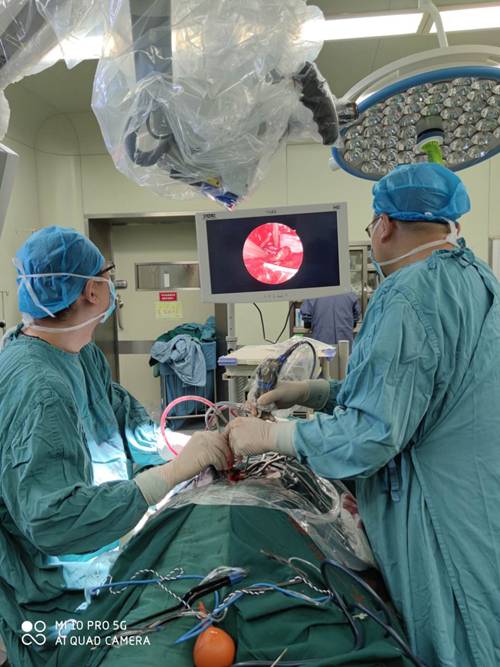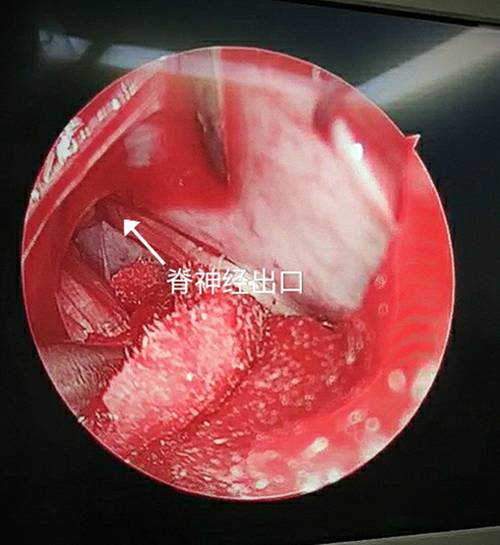Recently, a 14-year-old child (anonymous named Xiaojiang) with spastic cerebral palsy successfully underwent selective posterior rhizotomy (SPR) assisted by microscope and neuroendoscope under general anesthesia in the First Affiliated Hospital of Xi 'an Jiaotong University (XJTU). The surgery was performed via the interlaminar approach without bone removal. The dural incision was only 2cm.The opening of spinal nerve could be explicitly displayed under endoscope and SPR was successfully completed. According to literature review, this is the first case of SPR under microscope and neuroendoscope for spastic cerebral palsy in China.


In recent years, parents found that Xiaojiang was likely to tumble when walking and often walked on tiptoes with the lower limbs internally rotated and unilateral recurvatum deformity. Over aging, the abnormal walking posture was aggravated due to the significant increase of muscle tension in bilateral lower limbs. The child was finally diagnosed with spastic cerebral palsy in our hospital 1 month ago. After comprehensive examination and evaluation after admission, the surgical plan of SPR was determined. However, SPR under microscope via the interlaminar approach cannot guarantee the full exposure of nerves due to the age and narrow interlaminar space. Professor He Baixiang, Professor Bao Gang, Associate Professor Lian Xuemin from Department of Neurosurgery and members of cerebral palsy expert group, conducted consultation and discussion with other multidisciplinary experts from Department of Rehabilitation, Department of Orthopedics and Department of Pediatrics. Eventually, SPR under microscope and neuroendoscope via the interlaminar approach was chosen. Under the guidance of Professor He Baixiang and Professor Bao Gang as well as the support and cooperation of Department of Anesthesiology and Operating Room, Associate Professor Lian Xuemin, Attending Physician Song Qian and Wang Ning, and Electrophysiologist Lian Haiping completed the surgery. Intraoperatively, the bone structures of the spine were completely preserved, the interlaminar dural incision was only 1.5 cm, the opening of spinal nerve root was clearly seen under endoscope, and the functional SPR was successfully completed under the nerve electrophysiology monitoring. The volume of intraoperative bleeding was only 50ml , and the operation time was 1.5h. After the operation, the child was recovered well and could sit up the next day.
The principle of SPR is to measure the corresponding thresholds by electrical stimulation of nerve bundles, and selectively cut off nerve fibers with lower thresholds (mostly Ia fibers) to block therloop in the spinal reflex, thereby relieving muscle spasm in the area dominated by the corresponding ganglion segment. Because the reflex arc is partially blocked, spasm can be fundamentally relieved, which yields high clinical efficacy and is considered as the most effective surgical method for treating spastic cerebral palsy. This surgical regime fully takes the advantages of clearer filed of endoscope, wider exposure range and more precise and meticulous operation. In addition, it can also observe the lesions at a closer distance, and significantly expand the indications of SPR via the interlaminar route. This surgical technique has not been reported in China.